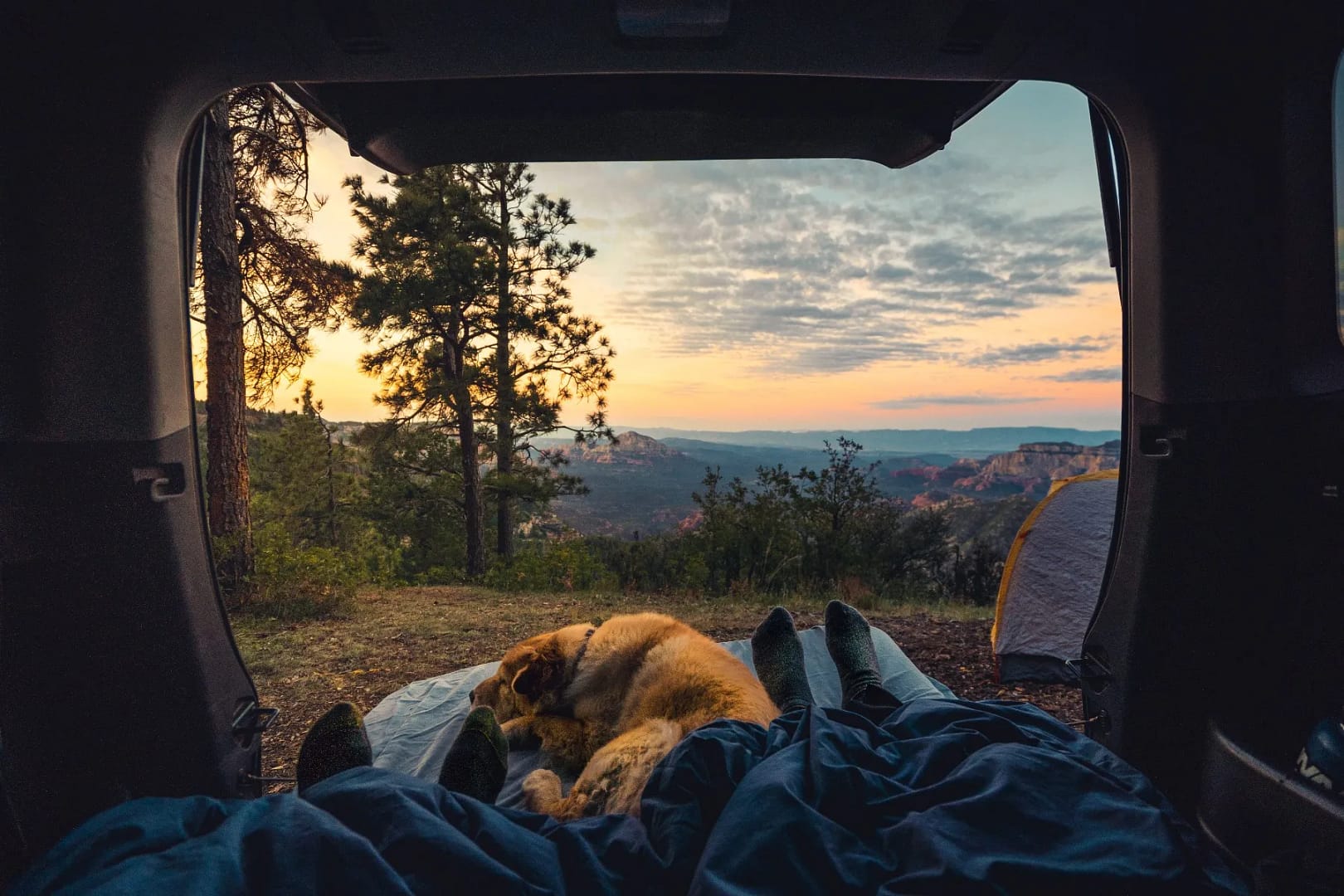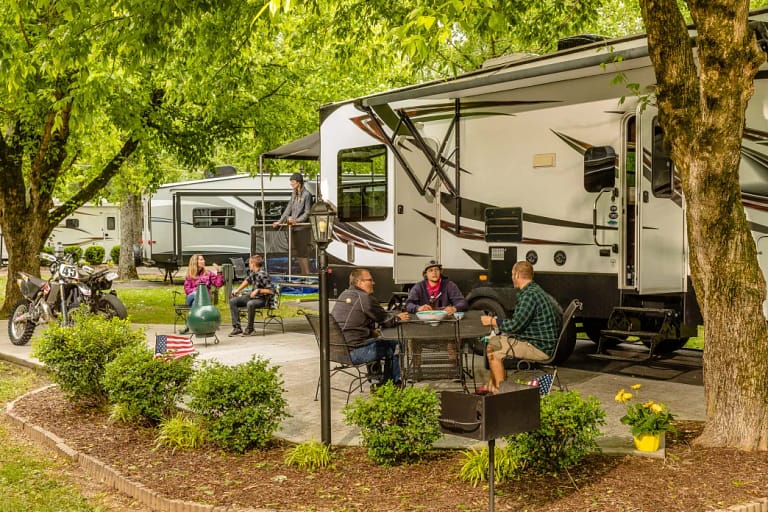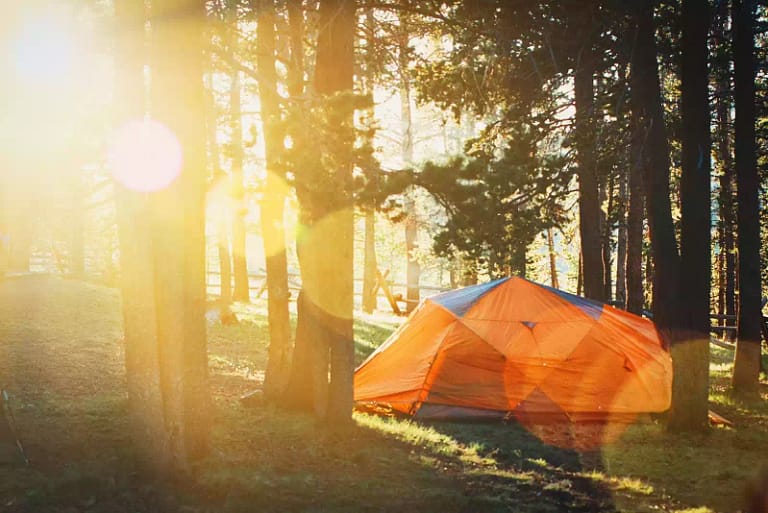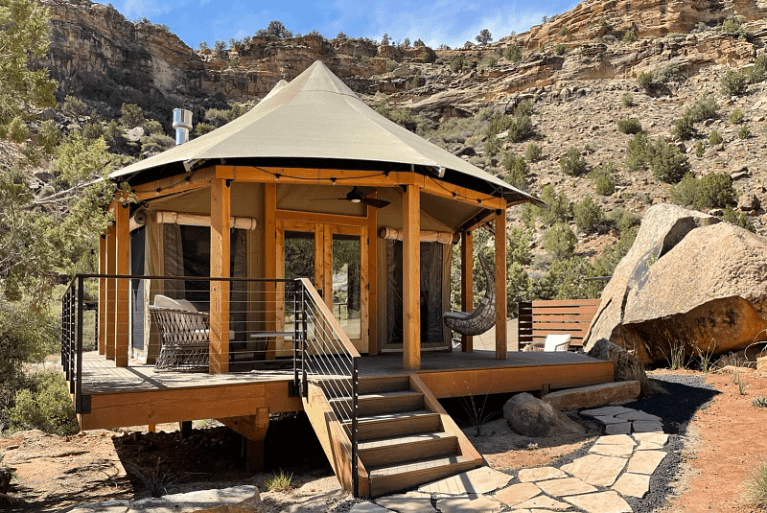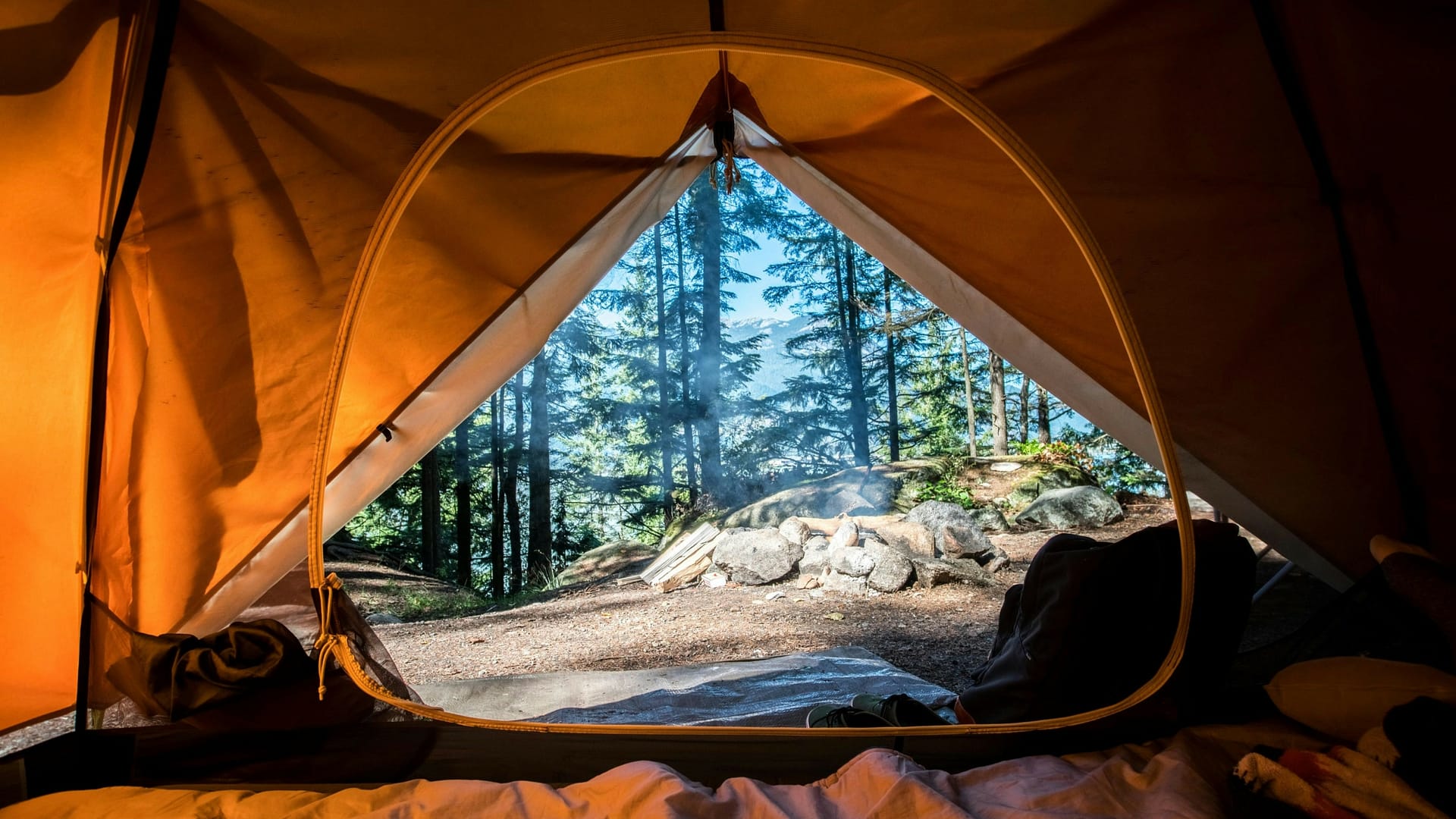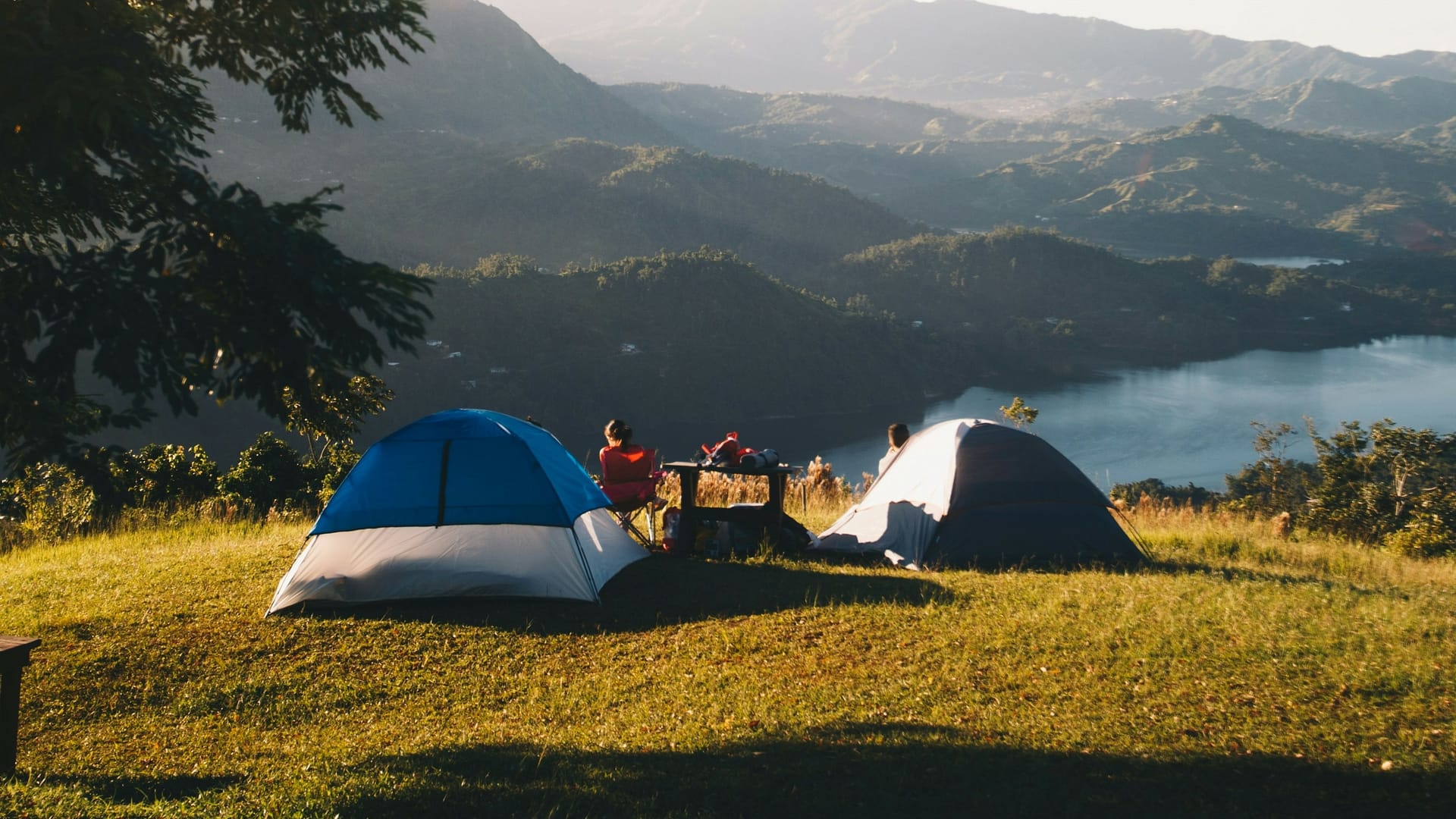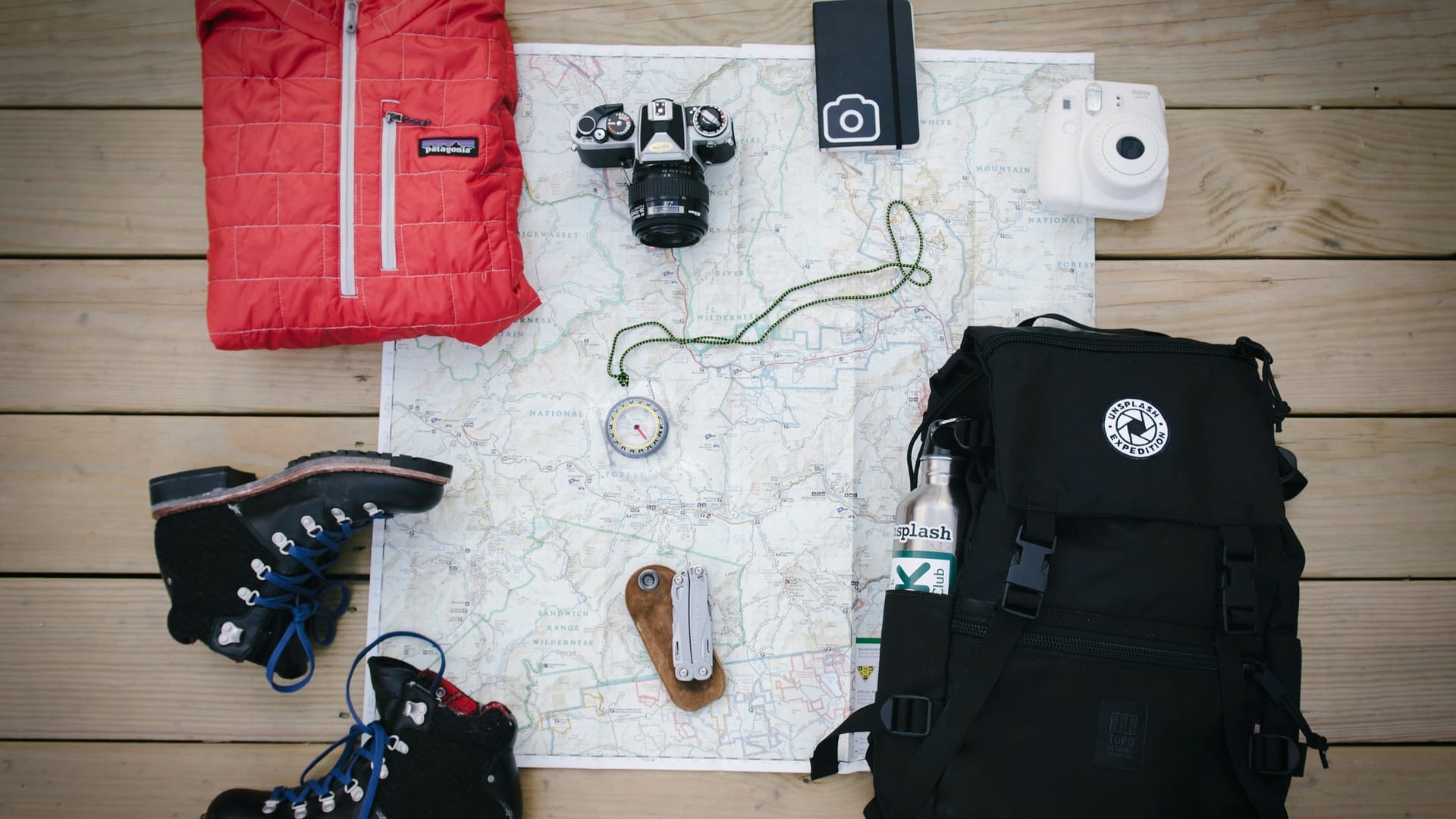Not sure how to even start when it comes to taking your dog camping?
When Captains Meriwether Lewis and William Clark set off to explore the unknown corners of the map, they had no idea what they were doing either. But they were accompanied by Lewis’s newly acquired Newfoundland pup Seaman.
While Seaman didn’t enjoy all the travel comforts we can now provide our four-legged friends, he was a vital part of the mission to explore the continent.
…And he even found himself embroiled in some shenanigans and mishaps that today’s human dog lovers will find relatable.
This is the guide Lewis and Clark (and Seaman!) wish they had when it comes to camping with dogs.
(Wondering what happened to Seaman the Original Adventure dog? That’s in here, too.)
In this article:
ToggleWhere You Can Camp with Your Dog
Search dog-friendly campsites on BookOutdoors
Lewis and Clark had a clear destination–the Pacific Ocean–in mind when they brought Seaman along on their expedition. It helps if you do, too. Especially if this is your pup’s first camping trip.
So where should you camp with your dog? Your imagination is the limit! …Well, your imagination and your destination’s dog rules. Most public and private campgrounds, national and state parks and BLM land have some sort of option for your canine companion to join you.
It pays to plan your entire trip and check for dog-friendliness before venturing into the great outdoors. Decide what types of activities you want to do with your pet. Your dog can do most things you can do on vacation. That means hitting the hiking trail, swimming, chilling by the campfire or even getting pampered at an RV park’s doggie spa.

Keep in mind that nearly every campsite will require that you keep your dog leashed and with you at all times. Read more about this in the policies provided for each campground.
Dog-Friendly Campgrounds
Most campground owners understand that when you want to play a family vacation you mean the whole family, furry members included. And these days, visiting a campground or RV park can be just as fun for your dog as for you. Campground amenities for pups can include dog parks, swimming pools, doggie spas and even agility courses.
Does your pet love to swim? Sadly, the vast majority of national and state parks don’t allow dogs on beaches. However, many private campgrounds lay along rivers or other waterways and invite you and your pup to take a dip.
Be prepared to pay a pet fee when taking your dog camping. Some campgrounds charge a refundable deposit or a small non-refundable pet fee per night. Many campgrounds also limit the number of dogs allowed to two pups.
Search more dog-friendly campgrounds on BookOutdoors.
How to Camp with Your Dog
Seaman wishes he had the opportunity to bed down in a cabin or RV after long days of crossing wild rivers and navigating rugged mountain ranges. But while the Lewis and Clark expedition lacked access to 5-star accommodations, you and your dog have your pick of ways to camp together.
Tent Camping with your Dog
Tent camping is a great way for you and your dog to spend time together in nature. And tent camping often allows you to travel beyond developed campgrounds to more remote locales.
When tent camping, your pup should sleep in the tent with you. Bring their bedding or a sleeping pad. Or the two of you can even cuddle up in the sleeping bag. Keep in mind you may have to size up your tent or sleeping bag to accommodate Fido.
When spending the night in a tent, also keep your dog’s nails trimmed. This avoids any unfortunate slashes in your tent’s fabric or floor covering. (This will inevitably happen right before it rains.)
Lewis and Clark’s tents were actually destroyed during the Corps of Discovery Expedition. Is it because someone forgot to trim Seaman’s nails? That’s lost to history.
RVing with your Dog
RVing (or van life) can be more like home away from home than tent camping. Many RVers and Van Lifers travel with their dogs full time.
Since you’re effectively bringing home with you, you can bring your dog’s own bed, water dishes and toys. (But if your dog is as spoiled as mine, be sure to watch the tow weight!)
Cabin Camping with your Dog
Campgrounds and state and national parks now provide dog-friendly cabins and even glamping spaces like treehouses and yurts. You may be asked to pay a pet deposit or small additional fee per pet/per night.
Depending on how you and your four-legged family member decide to go camping, you’ll need to pack different supplies.
Preparing to Take your Dog Camping
We don’t know much about how Lewis and Clark prepared Seaman for the expedition to the Pacific. But luckily you and I have the luxury of the internet.
These tips will ensure you and your dog have a healthy and happy camping trip.
Visit the Vet
Your dog should be up-to-date on immunizations. This is for their safety and because many campgrounds reserve the right to inspect your dog’s immunization paperwork. Tell your vet your plans. They may also have some pro-tips specific to your pet’s age, weight and general level of health.
Be sure to tell your vet where you are visiting. Depending on your destination, they may have tips for dealing with giardia, leptospirosis and other hazards your pup wouldn’t encounter while playing safely in the backyard at home.
And if your dog isn’t microchipped, it might be a good idea to do that before setting out. The last thing you want after your camping trip is to subject your pet to any Homeward Bound situations.
…And the Groomer
A dapper haircut can keep your dog cool in warm months. Neatly trimmed nails can cut down on any snagging hazards while out on the trail or in the tent or RV.
Brush Up on Training
As anyone who has ever successfully trained a dog has likely found (perhaps after some initial resistance?), dogs love rules. Your pup takes their cue from you on how to behave. They’ll look to you for guidance, especially in unfamiliar situations when surrounded by delicious smells and unfamiliar sounds.
When camping, it’s helpful when your dog understands basic commands like come, sit, stay and heel. And don’t forget the command “leave it.” Especially if you take your dog out into nature, where exciting new objects are just laying on the ground ripe for the chomping.
Pro Tip
Take a Doggie Camping Test Run. Pitch the tent or sleep a night or two in your RV close to home, or even in your driveway. This can head off any unforeseen issues before you and your pup roam further afield.
What to Pack for Your Dog’s Camping Trip
According to Lewis and Clark’s journals, Seaman often caught his own food–including beavers!–on the expedition.
But let’s just say that Seaman would get in a lot of trouble for stalking wildlife in today’s campgrounds.
Seaman also got stolen away from the party for a short period of time. Which is something that probably could have been avoided if Lewis had kept him properly leashed or harnessed.
Let’s look at the gear that will keep your dog healthy, safe and happy on your camping trip.
- Water. As tempting as that sparkling pond water might look, it could hide lurking bacteria. Your pup should drink the same filtered and purified water that you drink.
- Food and Treats. In many cases, you can simply feed your dog the same food they eat at home. But if backpacking, you might want to look into freeze-dried or dehydrated food.
- Bedding. If applicable, bring your dog’s bed or crate. If that isn’t practical, invest in a campaign pad or doggie sleeping bag. Just like you, they don’t want to sleep on the cold hard ground.
- Leash and/or harness. Most campgrounds require that you keep your dog leashed or harnessed and with you at all times. This also keeps your pet safe if you go on any outdoor adventures.
- Poop bags. Cleaning up after your dog is not only required at most campgrounds, it’s just good etiquette!
- Toys. Because you can’t hike and swim ALL the time.
- First Aid. Despite the best of intentions and obsessive planning, accidents do happen. Invest in a dog first aid kit including items like bandages, antiseptic, a thermometer and tweezers.
- Flea and tick prevention. Sadly, fleas and ticks don’t care that you and your dog are on vacation.
- Immunization Records and a Current Photo. Hopefully, you’ll never need to use these, but bring them in the unlikely case that your dog is injured or goes missing. Also, be sure your dog is wearing their ID tags at all times. Include a way to get in touch with you and consider a temporary tag with your campground information.
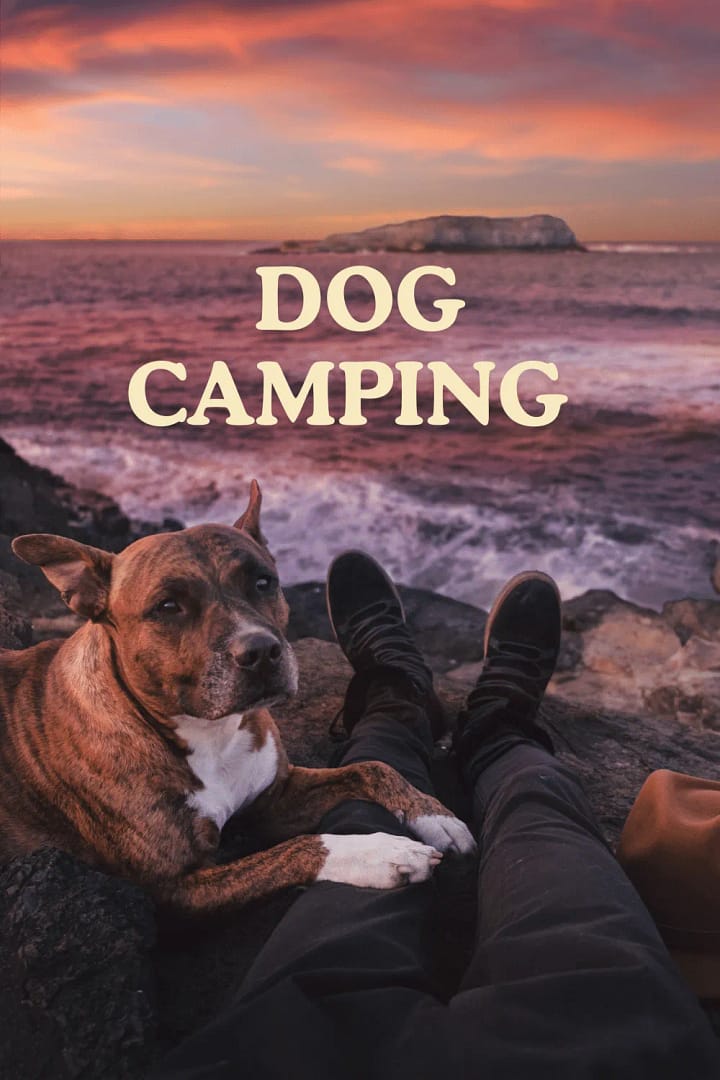
How to Keep Your Dog Safe while Camping
Important Reminder: Advice on the internet is never a substitute for the advice and care of an experienced veterinarian.
Remember how Seaman hunted for beavers while exploring the West? At least one beaver bit back. Lewis and Clark had to work together to perform surgery on a severed artery in Seaman’s hind leg.
While we don’t suggest performing emergency field surgery on your best friend, we do suggest taking some precautions to keep them safe.
Fleas and Ticks and Other Small Pests
Fleas and ticks are never kind enough to take a vacation. Pack your flea and tick preventative, and also check your furry friend over for unwelcome passengers at the end of a day outdoors.
Exposure and Dehydration
If you’re cold, they’re cold. If you’re hot, they’re hot. If you’re thirsty, they’re thirsty. Know the warning signs of a distressed dog and act accordingly.
Signs of Dehydration in Dogs
- Dry nose and/or gums
- Lethargy
- Weakness
- Collapse
The Pinch Test
To check for dehydration in your dog, gently pinch the skin at the back of your dog’s head. If it springs back, they are likely fine. But if the skin stays pinched, your dog likely needs hydration.
Monitor your dog and get them to a nearby veterinarian if they continue to show signs of distress.
Dehydration info via the Humane Society
Signs of Heat Exhaustion in Dogs
● Excessive panting or difficulty breathing
● Excessive drooling
● Dehydration
● Fever (body temperature above 103°F)
● Discolored or different colored gums
● Not producing urine
● Rapid pulse
● Muscle tremors
● Lethargy or weakness
● Vomiting or diarrhea
● Dizziness
When dog appears to be suffering from heat exhaustion, it’s imperative to cool them down immediately. Get to a cooler area and lower their body temperature with cool (not cold) water or towels.
Heat exhaustion info via Noah’s Ark Pet Hospital
If a medical incident occurs while camping, be sure to contact your veterinarian at home or a nearby veterinarian. I suspect that if dogs could talk they still wouldn’t tell us something is wrong because they want to continue the fun. So it’s up to us to ensure they’re safe and healthy on your camping trip.
Wildlife
Everybody loves a cute viral video about interspecies friendship. But a curious pup and a wild animal is not always a safe combination.
Camping wildlife encounters can include anything from your dog excitedly chasing after a rabbit to a run-in with a hungry bear. Don’t forget the beaver that gave Seaman the Adventure Dog a very bad day.
To avoid not-so-cute side of wildlife encounters:
● Keep your dog with you at all times. (This means leashed if required, or within sight and voice command if in an off-leash area.)
● Don’t leave your dog staked outside where wildlife might roam by.
● Don’t leave food out. Wildlife is attracted to delicious smells, so put your dog’s food up after mealtime.
● Be on the lookout for little guys. An encounter with a porcupine or skunk can be just as disruptive as an encounter with something bigger and hungrier.
● Watch for snakes! Snakes generally only bite when they feel threatened, but a curious pup might not know any better than to investigate an interesting noodle.
Dog Camping Etiquette
Following the written (and unwritten) rules of the campground can mean the difference between a relaxing vacation and a stressful fiasco.
● Know the rules. Peruse your campsite’s pet policy and the pet policy of any areas you plan to visit on your camping trip.
● Keep the leash on. Most campgrounds and dog-friendly outdoor spots require that your dog remain leashed and with you at all times.
● Clean up after your dog. Not only is dog waste unsightly, it can pollute waterways.
● Curb noise and distractions. You and your dog may love howling at the moon, but chances are your campground neighbor isn’t feeling it. Most campgrounds reserve the right to ask unruly dogs and their humans to leave.
● Practice Leave No Trace principles when in nature.
● Update your dog’s ID. Accidents happen and Houdini dogs escape. Consider updating your dog’s collar with a temporary tag including your campsite info.
What happened to Seaman after the Lewis and Clark Expedition?
Seaman’s person, Meriwether Lewis, died in mysterious circumstances along the Natchez Trace in Tennessee in 1809.
Legend has it that Seaman pined for Lewis after his death, and perished shortly thereafter.
But that’s all that is. Legend.
The last mention of Seaman in the historical record comes in a journal entry from July 15, 1806. Captain Lewis described poor Seaman, along with the humans on the expedition, suffering from swarms of mosquitoes on their return journey from the Pacific.
However, the National Park Service’s website opines that if something had happened to Seaman on the journey, Lewis and Clark would have written about it in their journals. And we agree.
In fact, Meriwether Lewis ended up traveling to both Washington DC and Virginia during Seaman’s potential lifespan, so for all we know, Seaman the Original Adventure Dog could have been the first dog to travel to both US coasts!
